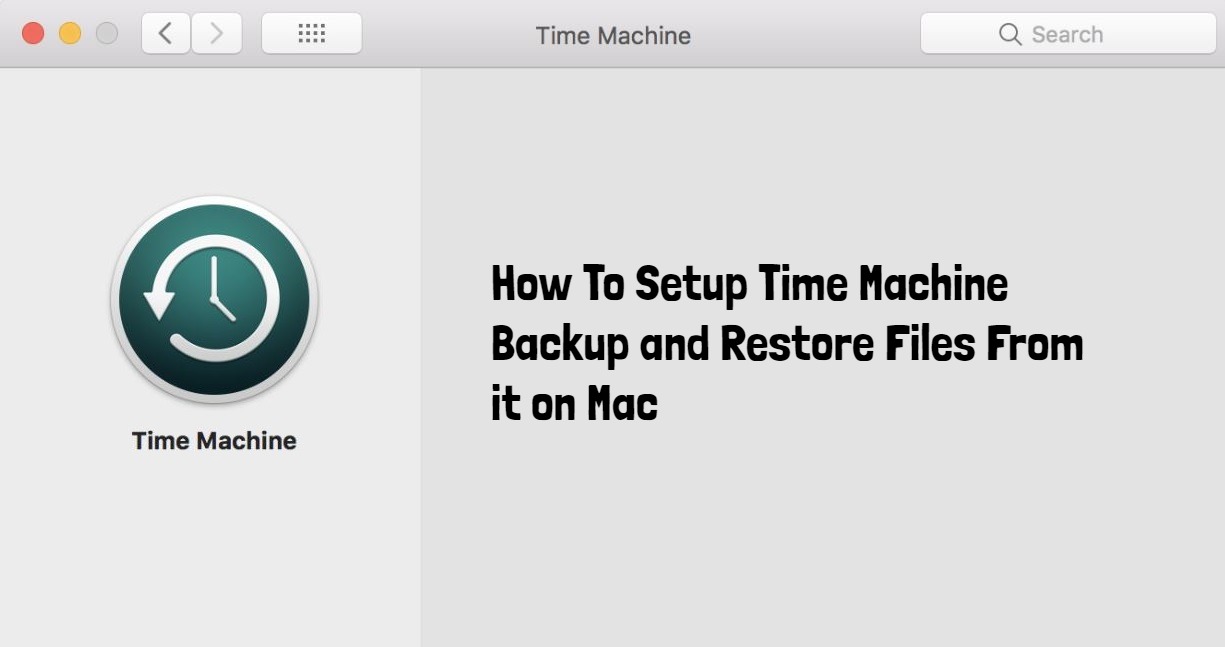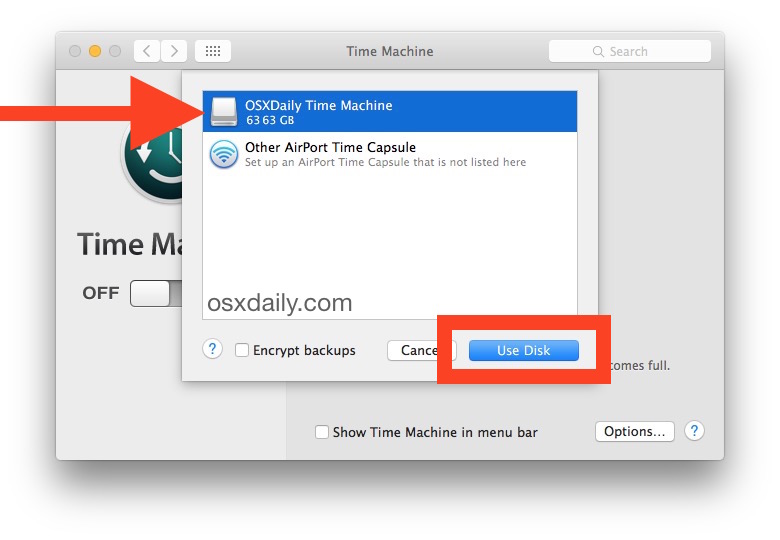
- #How to configure time machine on mac how to
- #How to configure time machine on mac install
- #How to configure time machine on mac full
- #How to configure time machine on mac software
- #How to configure time machine on mac code
If you think you’ll need different specs, you can specify the resources available to your VM as shown here. This machine is configured with 4 CPUs, 4GB of RAM, and 40GB of disk. This creates a virtual machine running with the latest Ubuntu LTS (20.04 at the time of writing) installed.
#How to configure time machine on mac code
We will start by running some cloud-init code to configure the VM. The steps here are only slightly different than those for Windows. Multipass is a great option for docker on macOS, particularly for M1 Macs. adduser ubuntu | multipass launch -cloud-init -disk 40G -mem 4G -cpus 4 -name docker-vm In PowerShell, run the following cloud-init code to create a new VM called docker-vm with docker engine installed: docker If you think you’ll need different specs, you can modify these steps as shown here.
#How to configure time machine on mac install
Run the Docker Hello World container from the host terminalįirst, install Multipass by heading to n and following the installation instructions there for your operating system.Alias the docker command to the host command line.Install Multipass (if not already installed).In this tutorial, we will run the Docker Hello World container within a Multipass VM, from the host command line. This allows you to run Docker locally on your Windows or Mac machine directly from your host terminal.
#How to configure time machine on mac software
That Docker instance can be controlled either directly from the VM, or remotely from the host machine with no additional software required. Multipass can host a docker engine inside an Ubuntu VM in a manner similar to Docker Desktop. If the battery drains completely during a backup, the backup won’t be complete and may get corrupted.If you’re looking for an alternative to Docker Desktop or to integrate Docker into your Multipass workflow, this how-to is for you. By default, Time Machine will back up only when your laptop is connected to AC power, to ensure that your MacBook stays powered during the backup process. Go to Time Machine’s preferences, click Options, and select the Back up while on battery power option. The default setting is for the program to notify you when it has deleted an older backup, but if you don’t need this information, uncheck the box next to Notify after old backups are deleted in Time Machine’s preferences.īackup on battery power: If you’re a MacBook user, you can also choose to back up while using battery power. Several user have also reported instances where Time Machine crashed a VM session when it tried to perform a backup.Įrase older backups without interruption: When your external drive gets full, Time Machine will automatically erase older backups to make room for new ones.
#How to configure time machine on mac full
Backing up your virtual machine will quickly fill up your external hard drive, as Time Machine tends to perform a full backup of virtual machines each time instead of running a simple daily update.

If you use an external virtual machine, such as VMware Fusion or Parallels Desktop, to run Windows on your Mac, we recommend excluding it from your Time Machine backups. To save space on your backup drive, exclude items you don’t need to backup. You can change your mind about these at any time by selecting a file and clicking the minus-sign (-) button. In the large Exclude list, you’ll see the folders or individual files that you selected. From there, pick and choose the items you’d like to leave out, and click Exclude when you’re finished. Then click the plus-sign (+) button under the list labeled Exclude these items from backups. Go to the Time Machine preferences pane and click Options. A full system backup will begin immediately.Įxclude items you don’t need: If you don’t need to save some items-restaurant takeout menus in your Downloads folder, for example, or miscellaneous screenshots that live on your Desktop-you can select items to omit from your system’s regular backups. Your Mac will recognize the added hardware, and a window will appear, asking you whether you want to use the drive to back up with Time Machine. If you already know that your hard drive is compatible, just hook it up.

#How to configure time machine on mac how to
If not, you’ll have to reformat the drive: Click the Erase tab, choose Mac OS Extended (Journaled) from the Format pop-up menu, and click Erase.įor more information, see “ How to format a hard drive.”

If the disk’s Format reads ‘Mac OS Extended (Journaled)’, you’re good to go.

At the bottom of the window, you’ll see information about it. In the left-hand column of the Disk Utility window, select the disk that you want to designate as your Time Machine backup. If in doubt, connect the hard drive to your Mac and open OS X’s Disk Utility (in the /Applications/Utilities folder). Once you have an external drive, confirm that it’s properly formatted for the Mac.


 0 kommentar(er)
0 kommentar(er)
